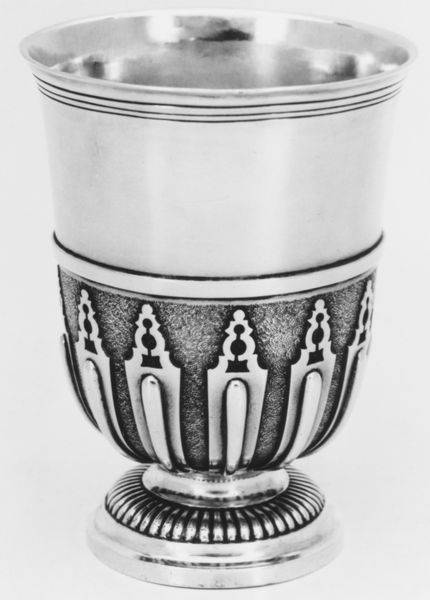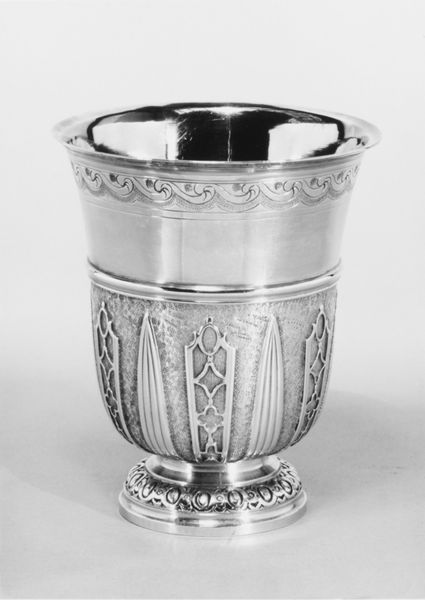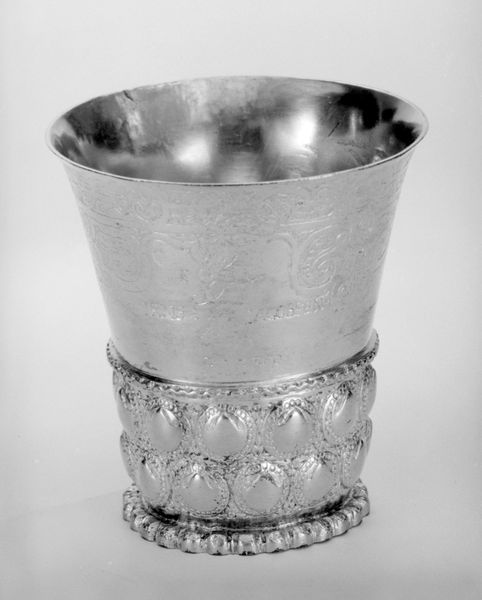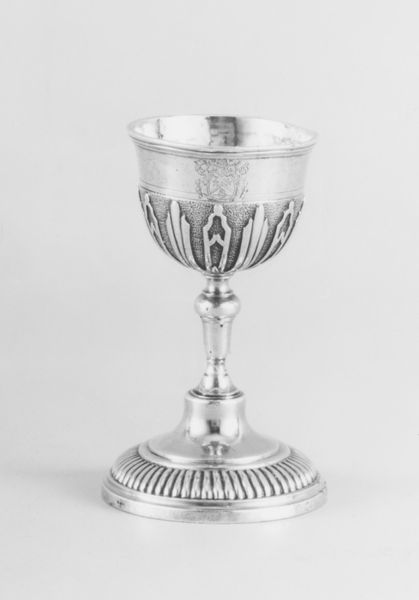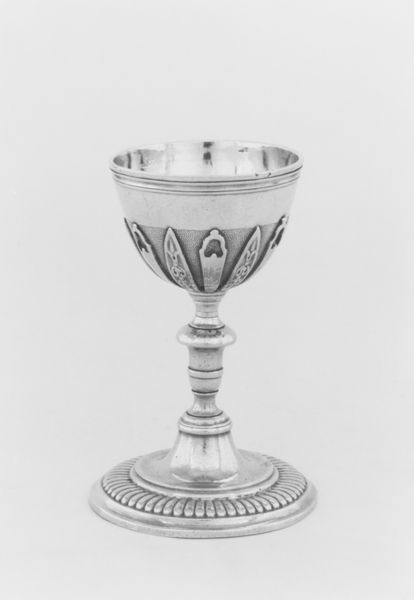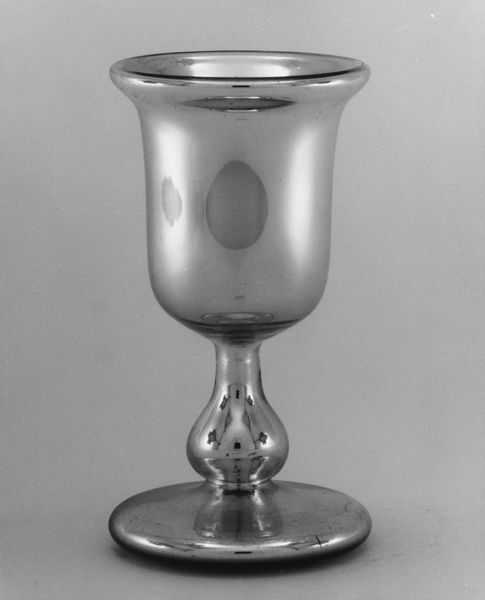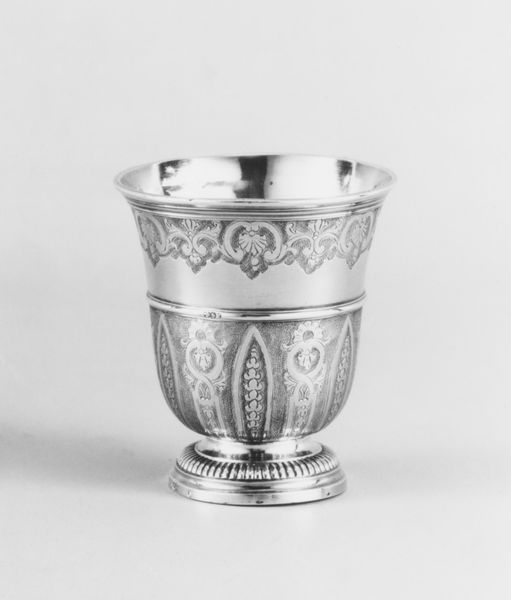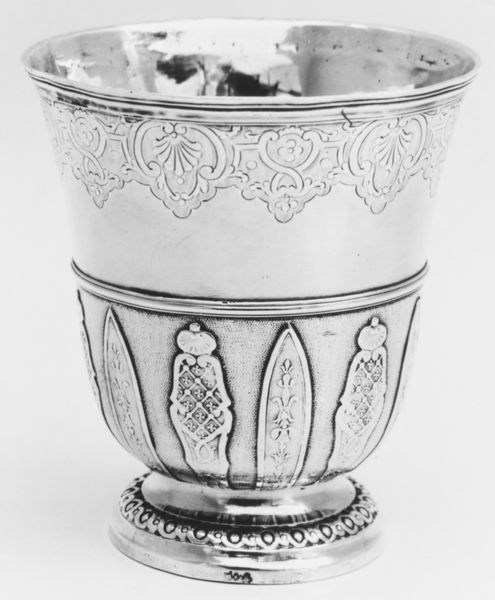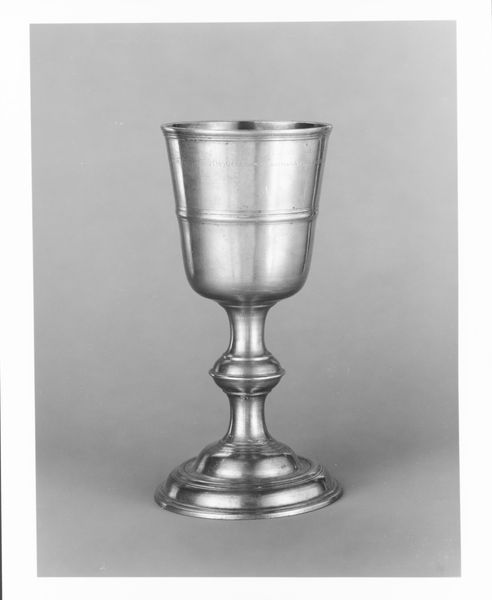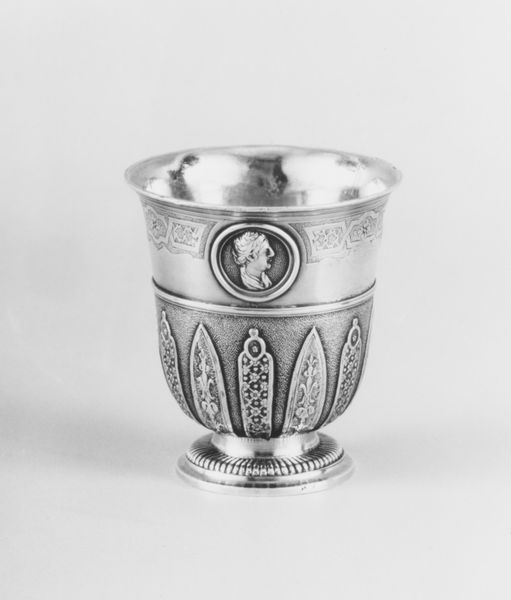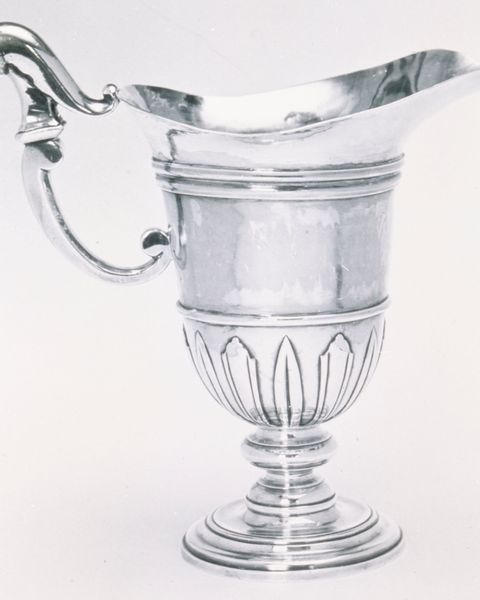
silver, metal, sculpture
#
medieval
#
silver
#
baroque
#
metal
#
sculpture
Dimensions: Overall: 3 5/8 × 3 in. (9.2 × 7.6 cm)
Copyright: Public Domain
Curator: This Baroque silver beaker, likely crafted between 1700 and 1750, resides here at the Metropolitan Museum of Art. What strikes you about it? Editor: Its gleam, its utter lack of color; the stark lines suggest formality, doesn't it? A reserved elegance in this highly polished metal, almost austere. Curator: Indeed, the silver itself carries cultural weight. Beyond mere utility, drinking vessels signify communal gatherings and power. The beaker, through its craftsmanship, elevates the simple act of drinking into something almost ceremonial. The fluted design along the base evokes a sense of growth, a life-giving well. Editor: Precisely. Consider the silversmith’s process here: hammering, shaping, engraving… These techniques point to a considerable investment of labor, signaling value, wealth and status, for the patrons. This wasn’t meant for everyday use. Curator: Right. Beyond that practical aspect, think about what a reflective surface meant in this period. Before mass-produced mirrors, objects like this could offer a distorted but precious glimpse of oneself, of one's own mortality reflected in luxury. Perhaps this vessel served as a quiet reminder, a memento mori at the table. Editor: The Baroque era was a dynamic time of immense economic expansion and shifting markets in Europe and elsewhere. Perhaps its owner amassed a great fortune as merchants often did by that period. Such beaker then became a tool that showcased social advancement achieved by expanding mercantile operations and trades. It suggests not so much meditation but consumption, really! Curator: Consumption, yes, but also connection. Consider the shared drinking rituals, the sense of continuity such an object provides. It transcends the individual and enters the realm of cultural memory, each use layering the object with significance. Editor: You make an excellent point about legacy and memory, however the material aspect keeps lingering in my mind: who worked the silver and what processes led it to become what we witness now? Curator: I appreciate you steering us back to materiality. It’s an important point – every object carries the weight of its making, its own biography embedded within it. Editor: It all invites you to question assumptions. Thank you!
Comments
No comments
Be the first to comment and join the conversation on the ultimate creative platform.
